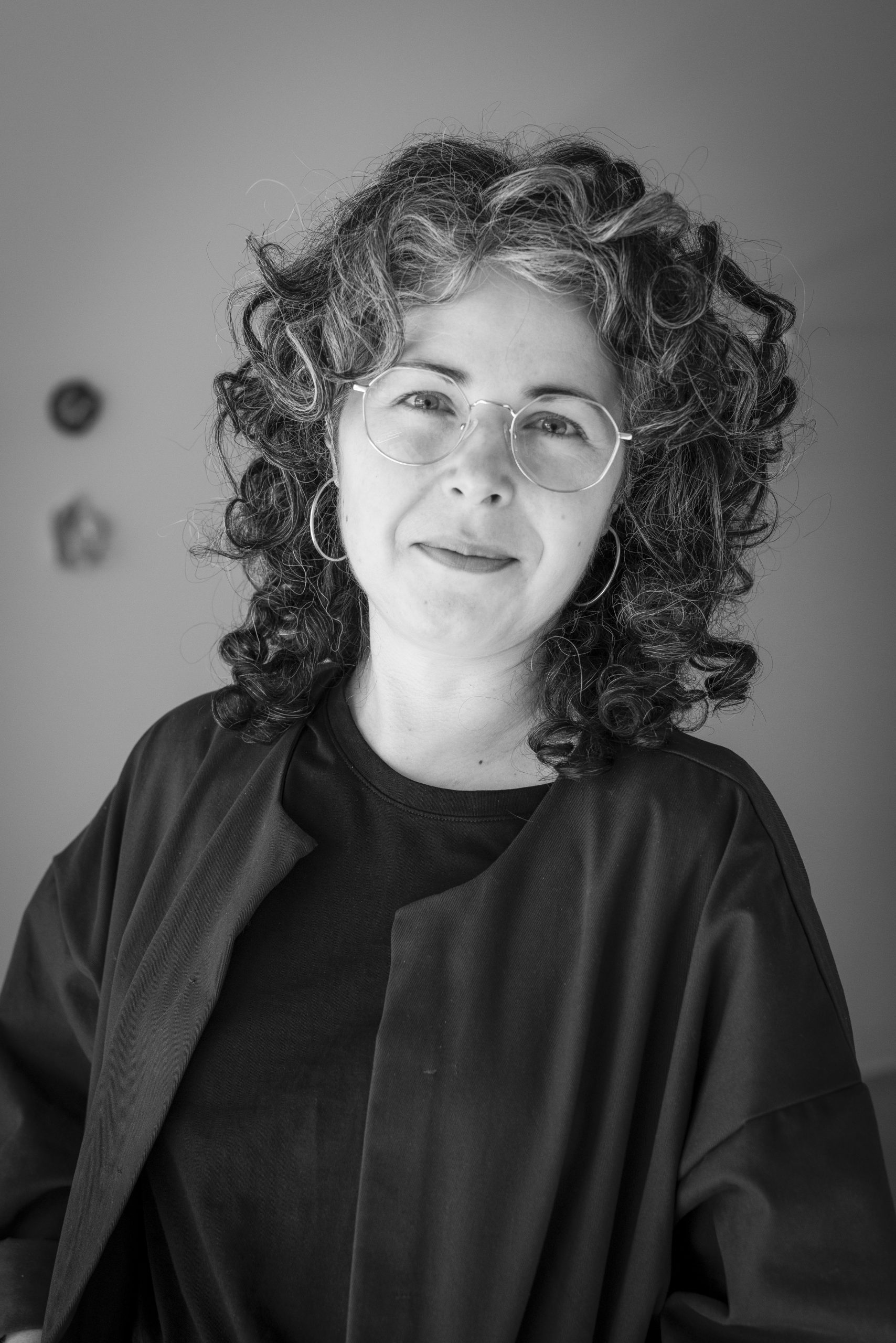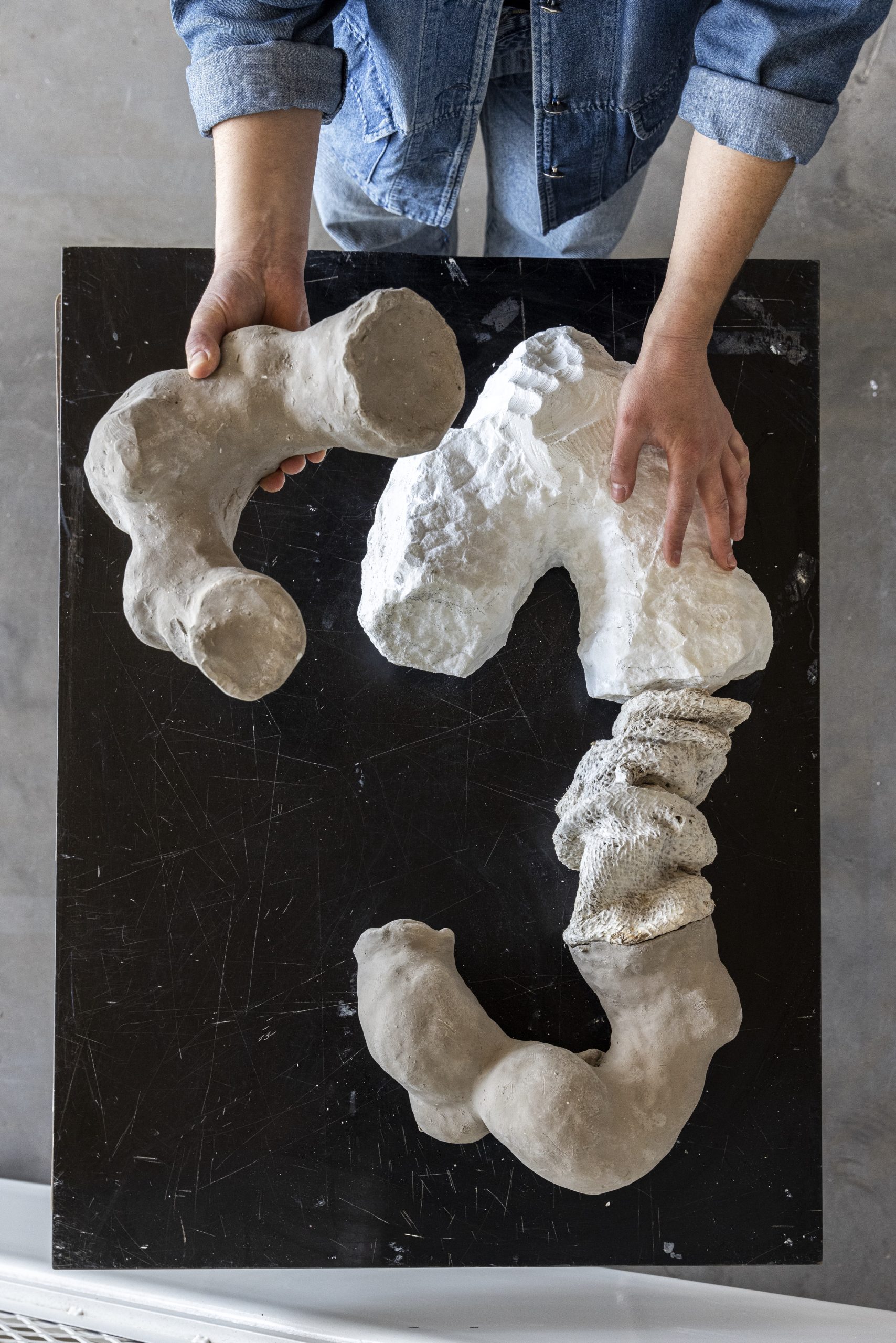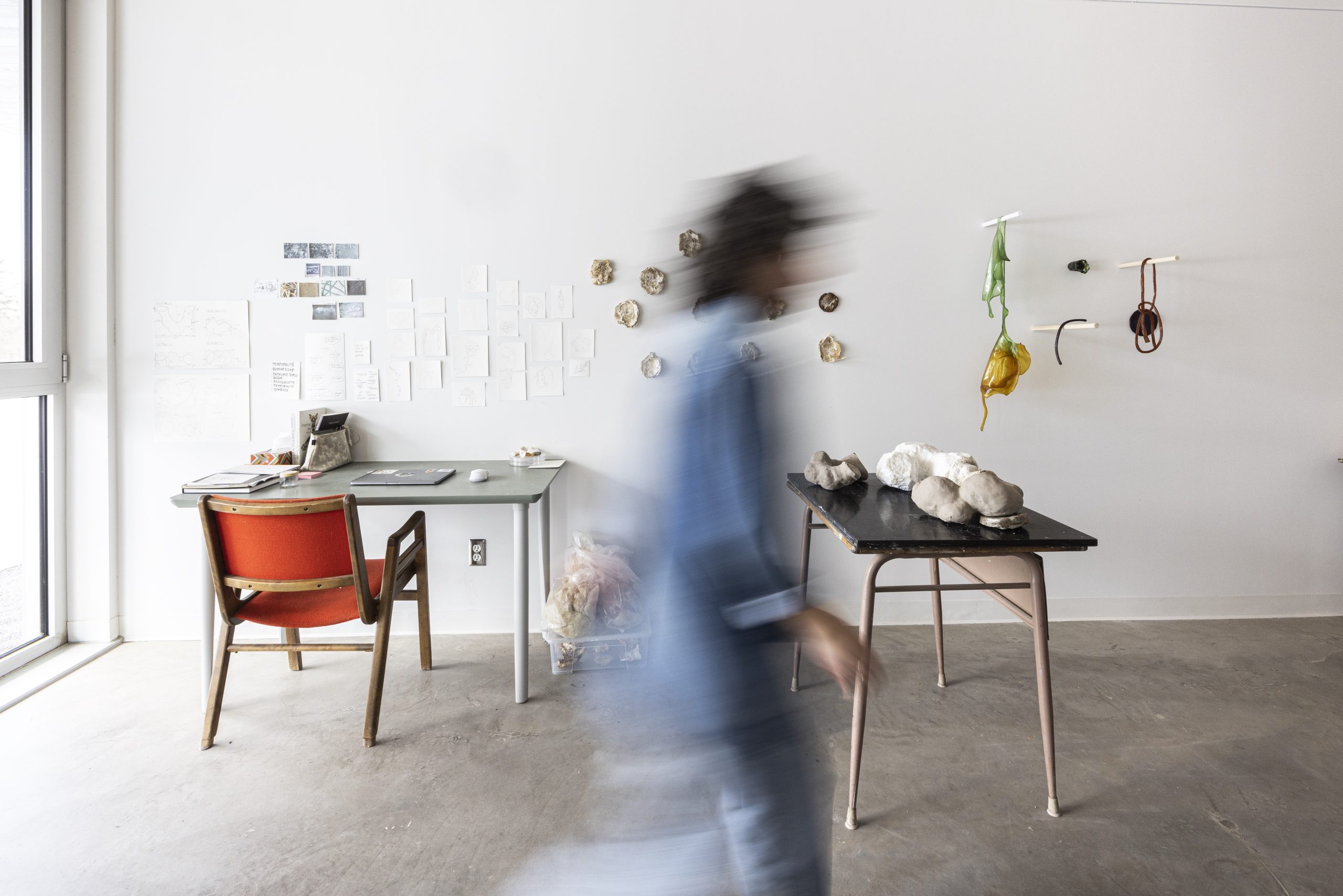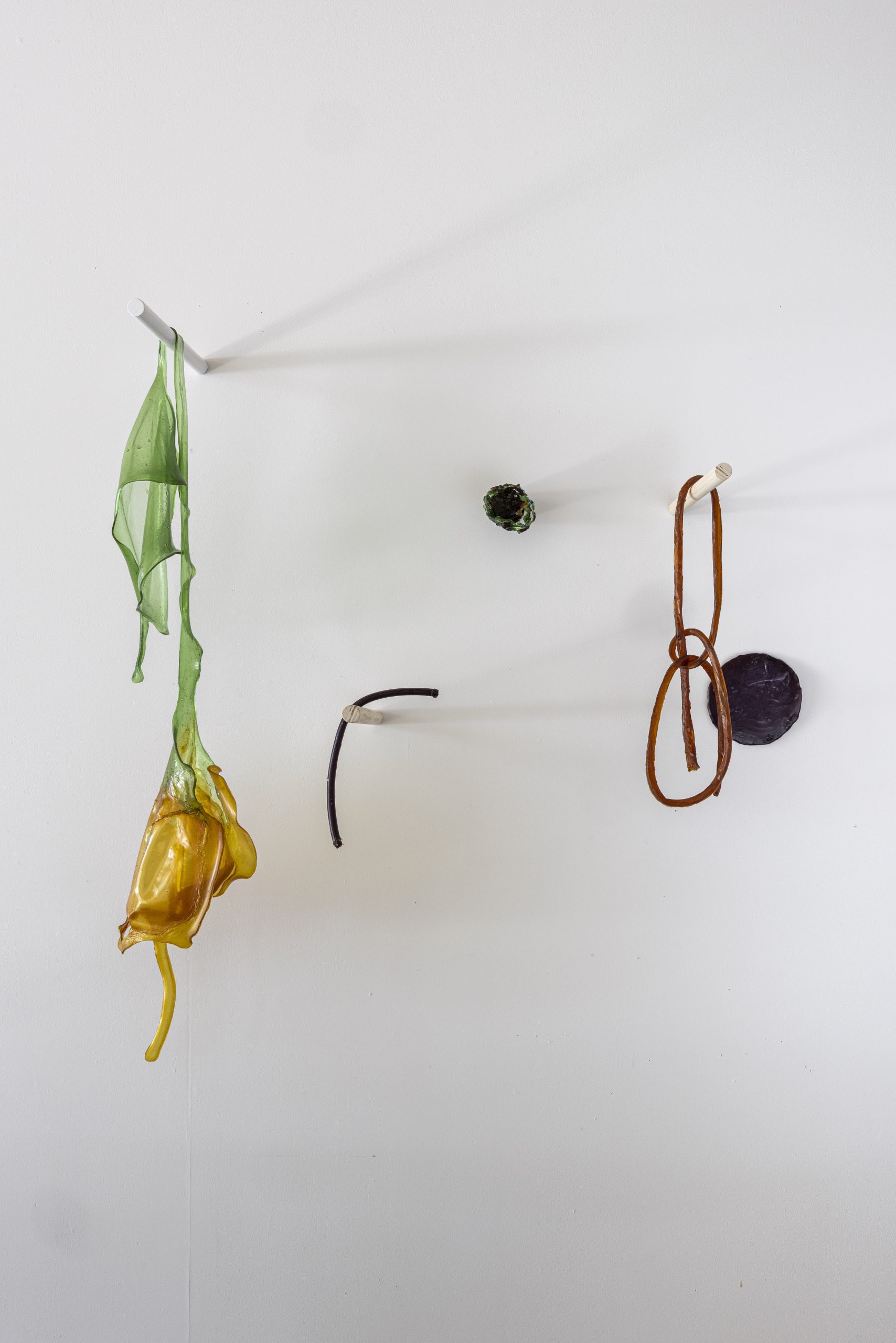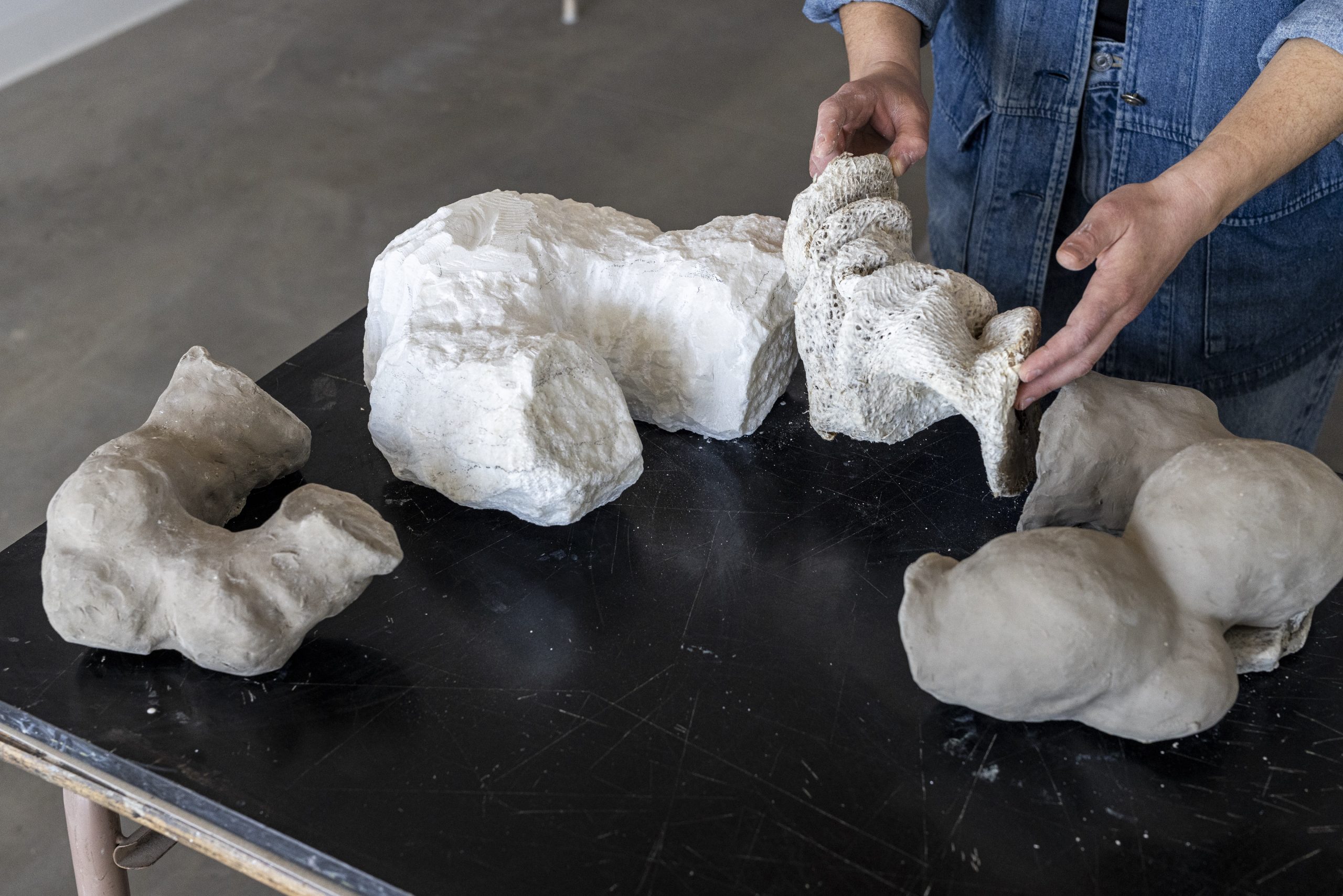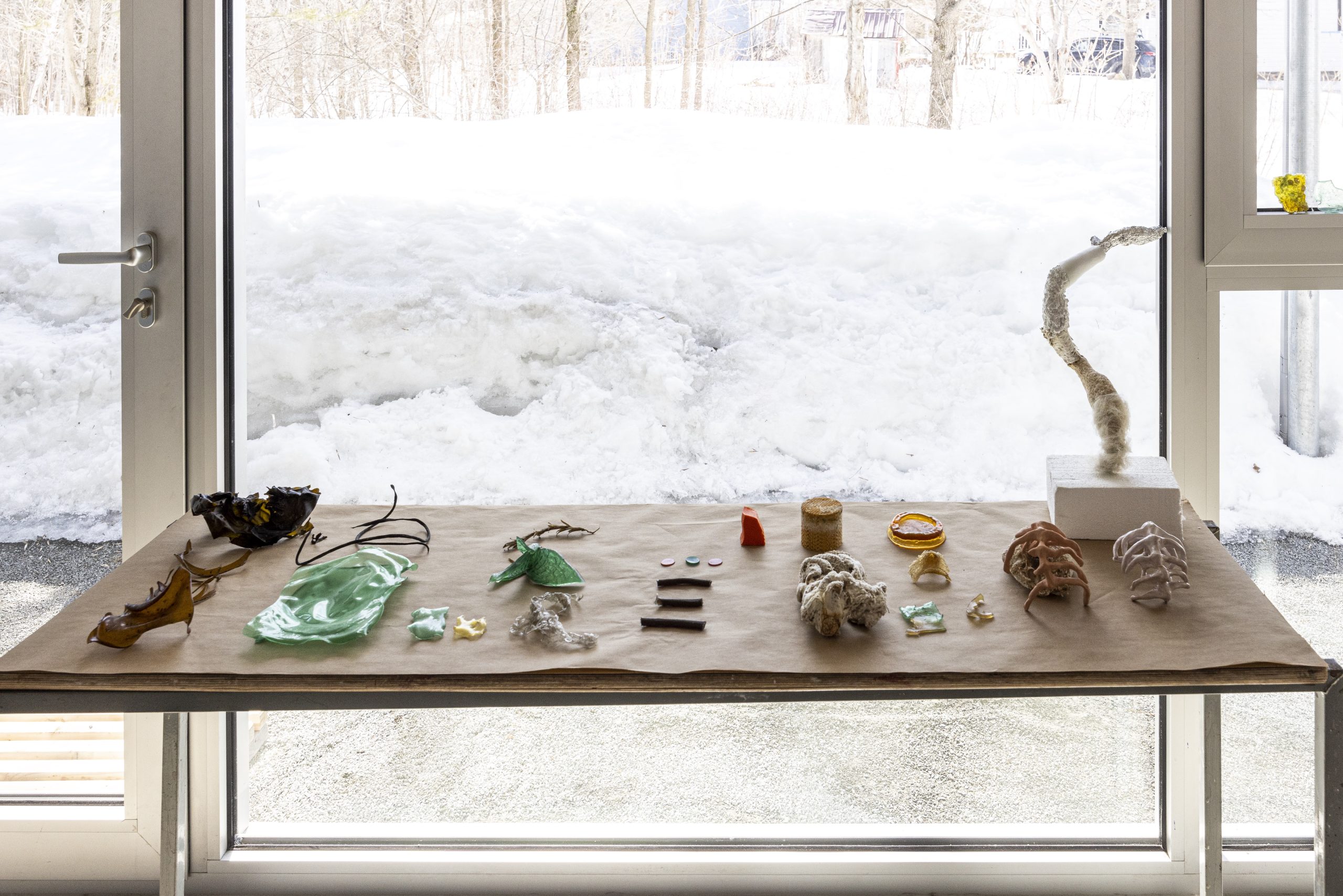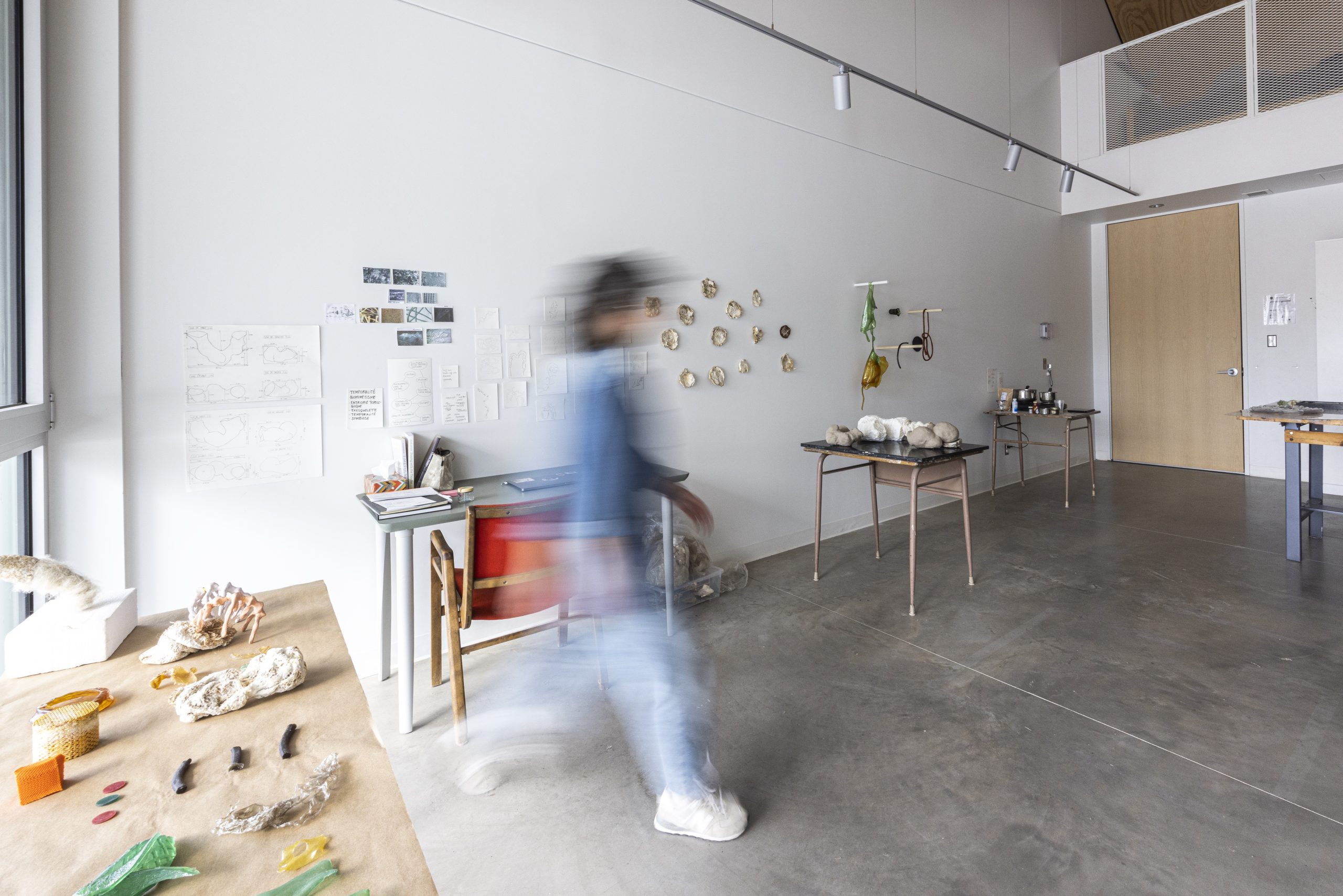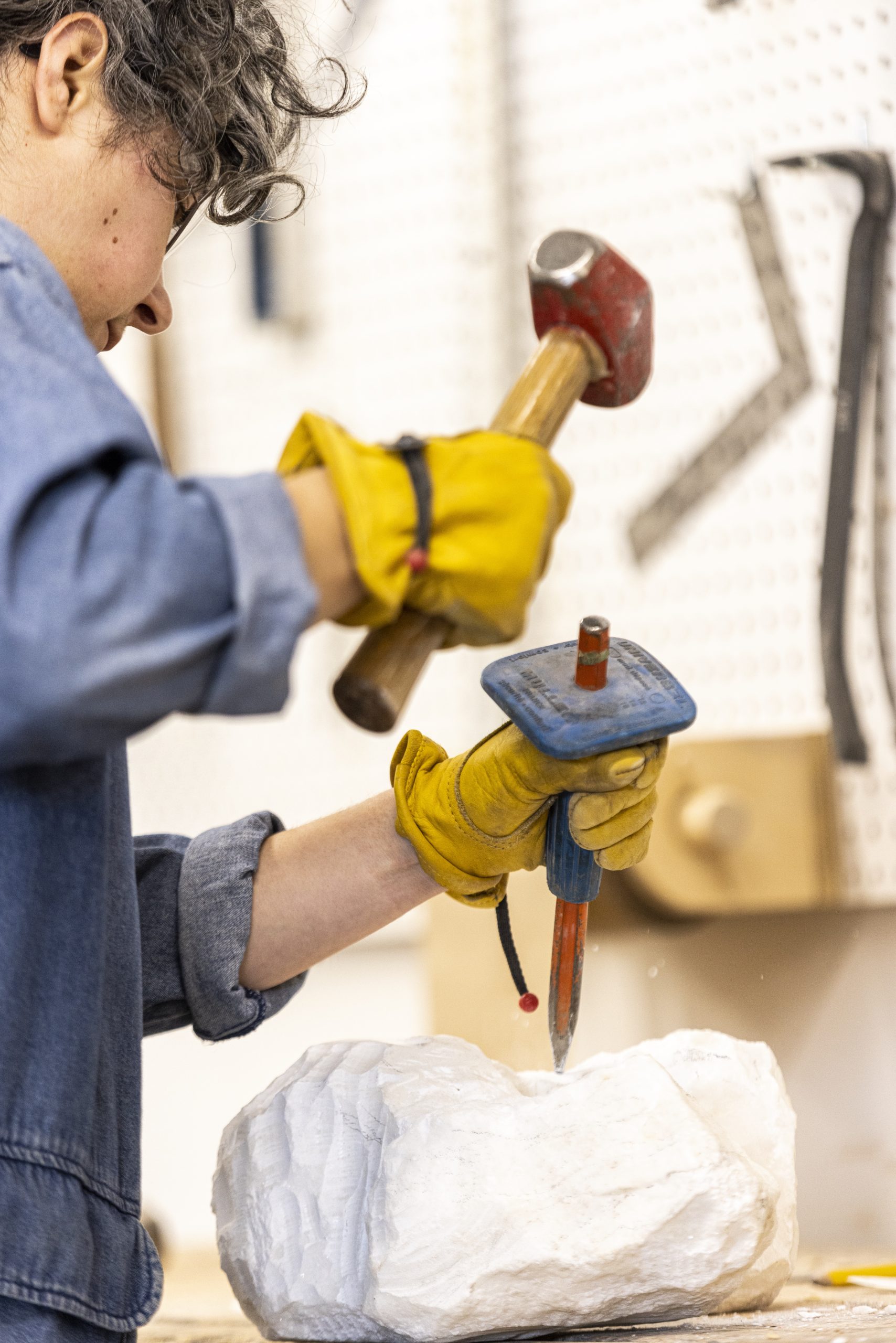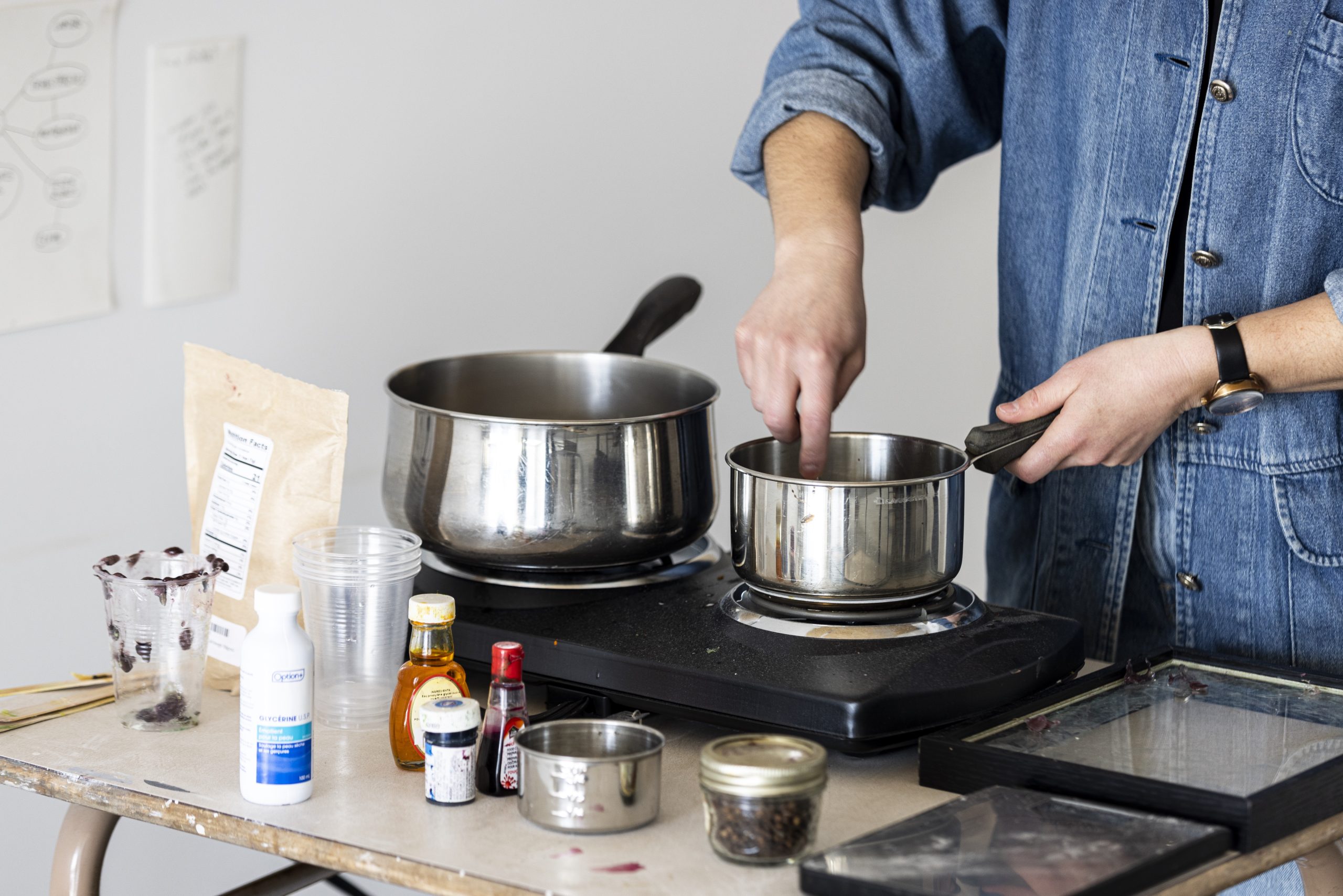
Amélie Brindamour
Testimony
Throughout the history of sculpture, artists have sought to use raw materials, usually of mineral or vegetal origin, to make shapes from their imagination. It is laborious work, involving extraction, transportation, and transformation of the material. Using a set of techniques and tools, the artist gradually removes fragments of the material used or inserts it into moulds in predetermined forms. Wood, stone, and metal are configured in ways that could never have happened without human intervention. For Amélie Brindamour, although the individual characteristics of materials are important, it is in their interactions, combinations, and co-evolution that possibilities are born. Following her research in university laboratories, during her residency Brindamour developed the use of two general categories of biomaterials in her practice: algae and mushrooms. In her studio, various plastic operations were applied to reishi, turkey tail, and polypores, whose mycelia were applied to chiseled forms and covered with jute canvas. Almost in symbiosis with its associated textile structure, the micellar network expanded and grew, taking on the form suggested to it. During this process, the organic material is, in part, at the mercy of environmental vagaries. It may grow quickly but precariously if it is too hot, or more slowly if affected by cold or a lack of nutrients. Nearby in the studio-laboratory, algae were agglomerated in bioplastic, creating translucent polymer fragments and diaphanous membranes that may inspire new sculptural compositions. In these experiments, interdisciplinary scientific thought informed Brindamour’s explorations, mobilizing the knowledge of people such as author and researcher Robin Wall Kimmerer, member of the Citizen Potawatomi Nation, who underlines from an Indigenous perspective the importance of inter-species relations with the example of the lichen, a primordial union of fungus and alga (Braiding Sweetgrass, 2013). Brindamour invites us to share her reflection on micellar life – to glimpse how the frontiers of the self may gradually disappear and how the raw and unformed may take form. Through her work, she shows us how the unpredictable, complex metamorphosis of living things may be controlled and provokes wonder with the original and respectful encounter that she creates among living realms, species, and ideas.
Biography
In her practice, Amélie Brindamour explores different issues related to the natural environment. She works with electronic art, biomaterials, and installation to produce interactive artworks, integrating sound and light components to reveal the intelligent systems present in nature. Her projects blur the boundaries between art and science, invite collaboration, and are developed during various residencies, including at Eastern Bloc (Montréal), the Speculative Life BioLab of Concordia University (CQAM/Milieux residency) and the Vermont Studio Center (Johnson, United States). Amélie holds a BFA (visual arts) and a master’s degree in art education from Concordia University. She lives and works in the Bas-Saint-Laurent region.
Discover
Newsletter
Keep up to date with the latest news!
